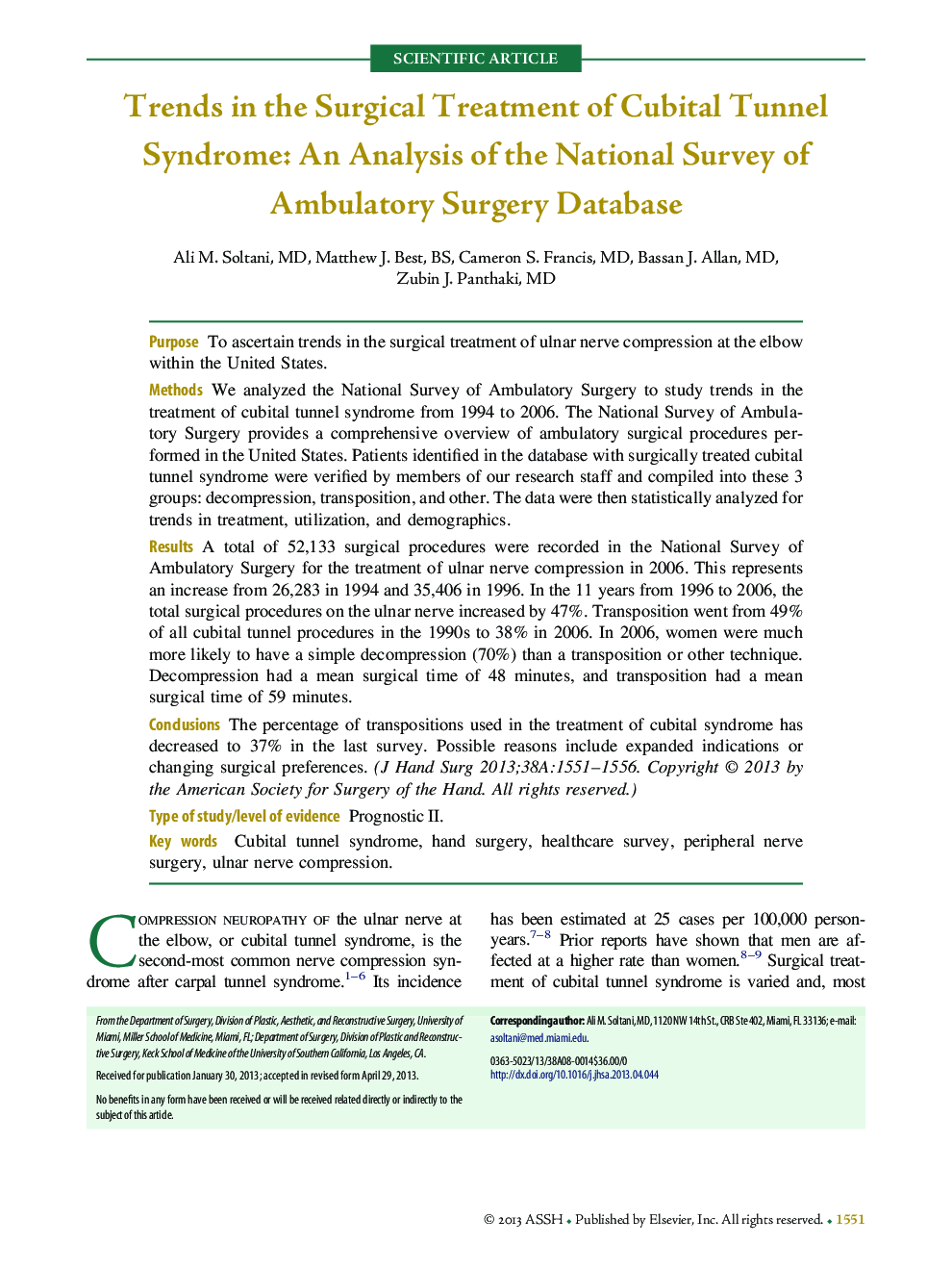| Article ID | Journal | Published Year | Pages | File Type |
|---|---|---|---|---|
| 4069383 | The Journal of Hand Surgery | 2013 | 6 Pages |
PurposeTo ascertain trends in the surgical treatment of ulnar nerve compression at the elbow within the United States.MethodsWe analyzed the National Survey of Ambulatory Surgery to study trends in the treatment of cubital tunnel syndrome from 1994 to 2006. The National Survey of Ambulatory Surgery provides a comprehensive overview of ambulatory surgical procedures performed in the United States. Patients identified in the database with surgically treated cubital tunnel syndrome were verified by members of our research staff and compiled into these 3 groups: decompression, transposition, and other. The data were then statistically analyzed for trends in treatment, utilization, and demographics.ResultsA total of 52,133 surgical procedures were recorded in the National Survey of Ambulatory Surgery for the treatment of ulnar nerve compression in 2006. This represents an increase from 26,283 in 1994 and 35,406 in 1996. In the 11 years from 1996 to 2006, the total surgical procedures on the ulnar nerve increased by 47%. Transposition went from 49% of all cubital tunnel procedures in the 1990s to 38% in 2006. In 2006, women were much more likely to have a simple decompression (70%) than a transposition or other technique. Decompression had a mean surgical time of 48 minutes, and transposition had a mean surgical time of 59 minutes.ConclusionsThe percentage of transpositions used in the treatment of cubital syndrome has decreased to 37% in the last survey. Possible reasons include expanded indications or changing surgical preferences.Type of study/level of evidencePrognostic II.
